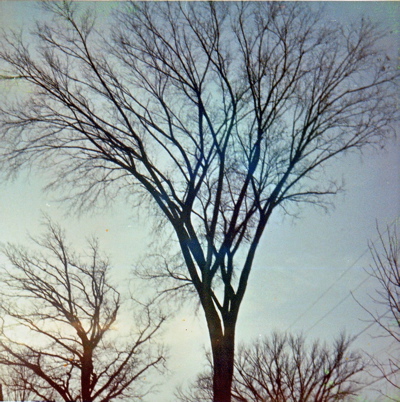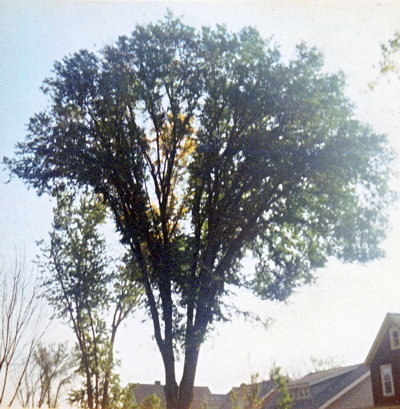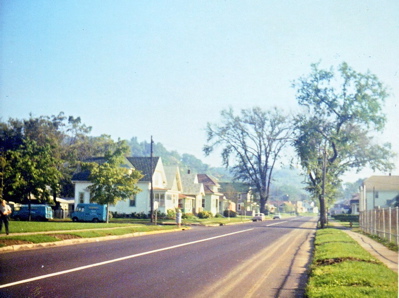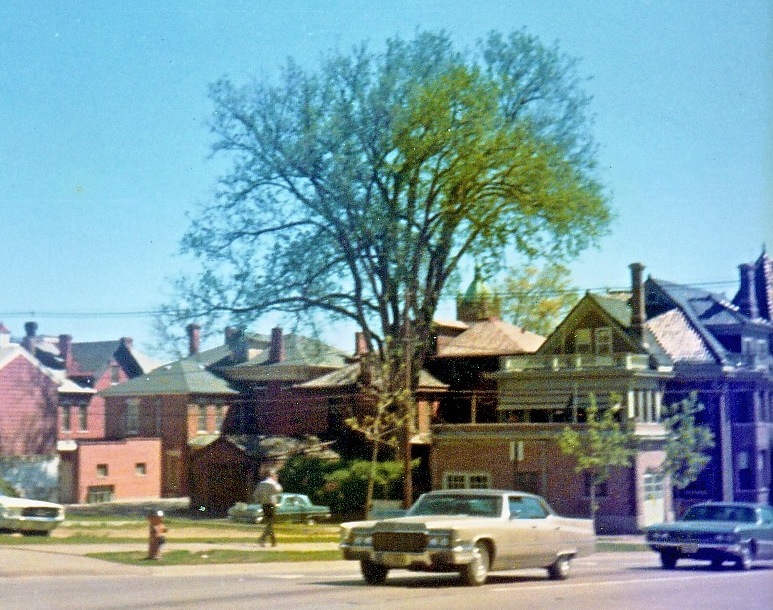Encyclopedia Dubuque
"Encyclopedia Dubuque is the online authority for all things Dubuque, written by the people who know the city best.”
Marshall Cohen—researcher and producer, CNN
Affiliated with the Local History Network of the State Historical Society of Iowa, and the Iowa Museum Association.
ELMS: Difference between revisions
No edit summary |
No edit summary |
||
| Line 11: | Line 11: | ||
[[Image:kelleher-3.jpg|left|thumb|150px|The last healthy elm on Rhomberg Avenue just southwest of the corner of Rhomberg and Shiras Blvd. The picture was taken on September 19, 1970.Photo courtesy: Bill Kelleher.]] | [[Image:kelleher-3.jpg|left|thumb|150px|The last healthy elm on Rhomberg Avenue just southwest of the corner of Rhomberg and Shiras Blvd. The picture was taken on September 19, 1970.Photo courtesy: Bill Kelleher.]] | ||
[[Image:kelleher-4.jpg|right|thumb|150px|A photo of Rhomberg Avenue looking northeast with evidence of tree removal in the foreground. Photo taken on September 19, 1970 Photo courtesy: Bill Kelleher.]] | [[Image:kelleher-4.jpg|right|thumb|150px|A photo of Rhomberg Avenue looking northeast with evidence of tree removal in the foreground. Photo taken on September 19, 1970 Photo courtesy: Bill Kelleher.]] | ||
Dubuque officials at first denied the presence of the disease, but as evidence accumulated a program to save the trees was launched. Spraying with DDT for other diseases had been started in 1958 along with trimming and destroying diseased branches. Although these practices were continued, the blight spread and the use of DDT ended after it was labeled a threat to the environment. | |||
In 1964 the Park Department began using Bidrin, a pesticide advertised as a preventive for the disease. In use it was discovered that the chemical did no more than slow the disease. Other chemicals were also tried and discontinued. One idea never tried was the importation of French wasps that would eat the beetles causing the disease. | In 1964 the Park Department began using Bidrin, a pesticide advertised as a preventive for the disease. In use it was discovered that the chemical did no more than slow the disease. Other chemicals were also tried and discontinued. One idea never tried was the importation of French wasps that would eat the beetles causing the disease. | ||
Revision as of 03:34, 30 January 2011
ELMS. Stately trees that once graced much of the city. According to an article in the TELEGRAPH HERALD in 1961, a "stately" home in the 19th century was not considered complete until the owner had planted at least one elm tree. Elms planted and cared for by Joseph A. RHOMBERG formed the glorious but doomed "Cathedral of the Elms" along Rhomberg Avenue to the site of RHOMBERG PARK. A grove of elm trees lining the west side of West Third between Hill and Alpine was planted by Robert Hutcheson COLLIER in 1873. These trees were removed from the bottom lands along the MISSISSIPPI RIVER to shade the street according to Mrs. Jack McGuire, his granddaughter. "Elm salesmen" were a common sight in the city in the late 19th century. Carrying bundles of small 'river elms' on their backs, they went door-to-door to make sales.
In 1920 a huge elm-planting ceremony was held along Grandview Avenue when both sides of the street were planted with trees as a memorial to former President Theodore Roosevelt who died in 1919. Discussion of planting an elm tree for each Dubuque soldier who died in WORLD WAR I were never carried out. Estimates of the number of elms once growing in Dubuque ranged from as few as 10,000 to as many as 80,000. In 1963 a special census counted 4,617 growing along the city's STREETS; many were planted during the last quarter of the 19th century.
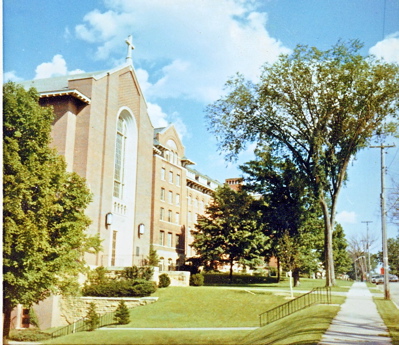
In 1961 Telegraph Herald reported that about 5,000 of the 6,000 city-owned shade trees were elms and that at least as many could be found on private property. A 150-year old elm stood in the backyard of a property at 215 Fremont. The tree measured six-feet in diameter and had a branch-spread of 30-feet. A one-hundred foot high elm, once believed to be the largest in Iowa, stood at 1940 Coates.
[[DUTCH ELM DISEASE first reached the United States in 1930 in a load of elm burl delivered to the port of Baltimore from Holland. The beginning of the end for Dubuque's elms started in August 1961, when the first evidence of the disease was discovered in a tree at 75 Hill Street.
Dubuque officials at first denied the presence of the disease, but as evidence accumulated a program to save the trees was launched. Spraying with DDT for other diseases had been started in 1958 along with trimming and destroying diseased branches. Although these practices were continued, the blight spread and the use of DDT ended after it was labeled a threat to the environment.
In 1964 the Park Department began using Bidrin, a pesticide advertised as a preventive for the disease. In use it was discovered that the chemical did no more than slow the disease. Other chemicals were also tried and discontinued. One idea never tried was the importation of French wasps that would eat the beetles causing the disease.
Dubuque's terrain proved a serious problem in containing Dutch elm disease. Trees on the hillsides and in the valleys could not be carefully monitored or removed. Infected trees provided breeding grounds for the beetles that spread the disease. Governmental policies were also a problem. As late as 1968 it was often not clear who was responsible, according to the city ordinance, for the disposal of dead trees.
When the Dutch elm disease reached its peak in 1968, 85 percent of Dubuque's trees were elms. The vast numbers of dying trees and the speed with which the disease spread soon made it apparent that the containment effort was futile. The battle to save the elms cost the citizens of Dubuque over $750,000. Today the city, in planting trees, avoids concentrating an area with one kind of tree to avoid a repeat of similar destruction. (Photo Courtesy: U.S. Forest Service and Jack H. Barger)



